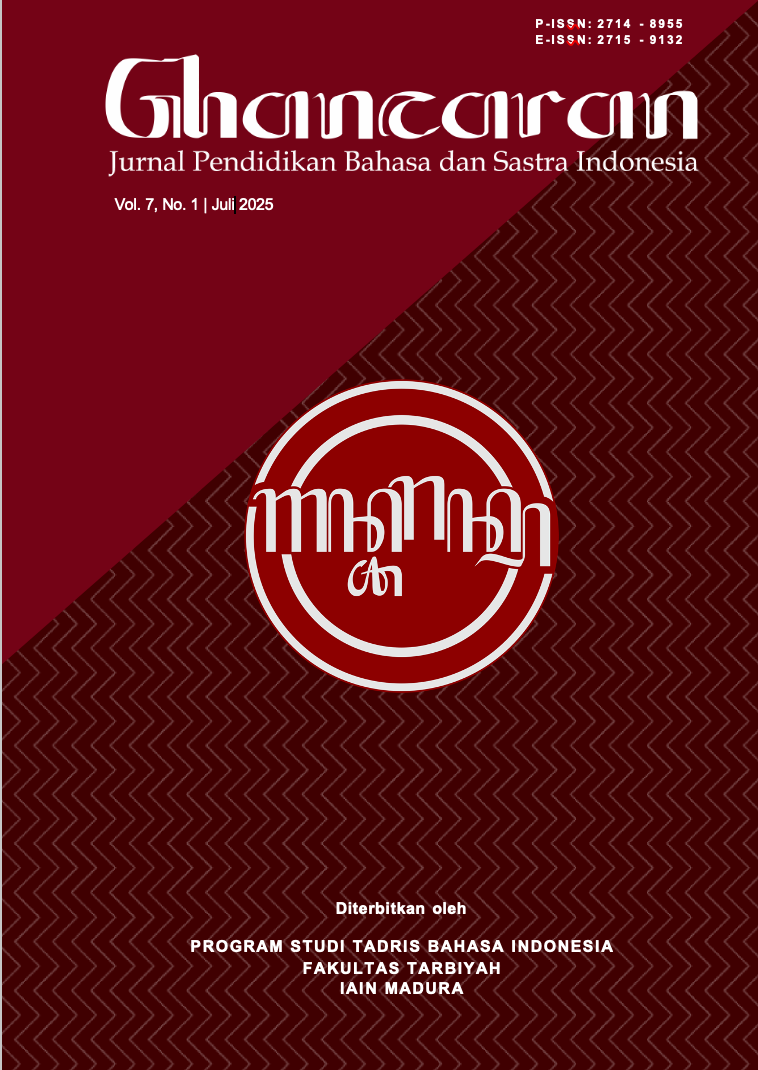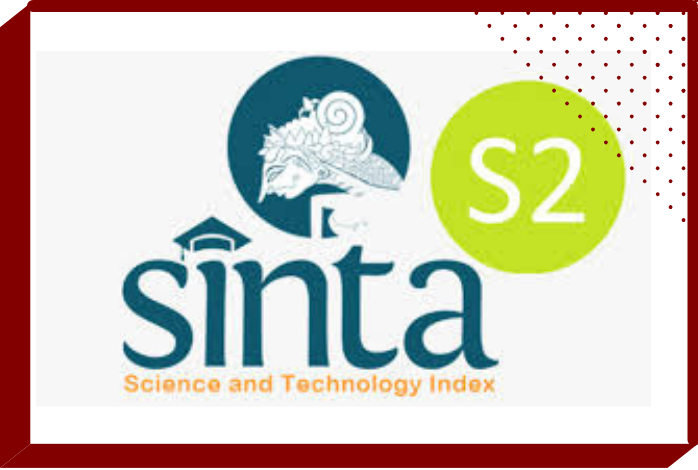Kajian Perbandingan Idiom Berbasis Tumbuhan dalam Bahasa Indonesia dan Bahasa Mandarin
 Abstract views: 216
,
Abstract views: 216
,
 PDF downloads: 185
PDF downloads: 185
Abstract
This study focuses on plant-related idioms, exploring the similarities and differences between the two languages in expressing worldviews and values by comparing the structure, meaning, and cultural context of Indonesian and Chinese idioms. This research uses a descriptive qualitative approach, combining semantic, comparative and cultural analysis to deeply uncover the symbolic meaning of plant idioms and their cultural influences. The results show that Indonesian idioms have diverse forms, are close to life, and embody the cultural qualities of flexibility and inclusiveness, while Chinese idioms are characterized by symmetry and simplicity, highlighting the philosophical tradition of the unity of heaven and man and profound cultural connotations. Moreover, plant idioms, as important carriers of the intermingling of languages and cultures, not only reflect both cultures' unique perspectives on nature and society but also make significant contributions to cross-cultural communication. These idioms also have strategic value in language education, especially in helping to understand and apply cultural symbols more effectively.
Downloads
References
Afrina, U., Thamrin, L., & Khiong, B. Y. (2014). 汉语与印尼语成语中的五种植物文化意义对比分析. Jurnal Pendidikan dan Pembelajaran Khatulistiwa (JPPK), 3(10).
Ayesa. (2021). The Meaning of Color Term in Chinese and Indonesian Idioms: Natural Semantic Metalanguage Approach. Journal of Language and Literature, 9(1), 74–82.
Badan Pengembangan dan Pembinaan Bahasa. (2016). Kamus Besar Bahasa Indonesia.
Goody, J. (1993). The Culture of Flowers. Cambridge University Press.
Habeahan, D. C., Nainggolan, K. F., Sitorus, D. O., & Febriana, I. (2024). Pemertahanan Identitas Budaya melalui Pendidikan: Peran Bahasa Indonesia di Samping Bahasa Asing di Era Globalisasi. J-EDu: Journal-Erfolgreicher Deutschunterricht, 4(1), 58-63.
Kramsch, C. (2014). Language and Culture. AILA Review, 27, 30–55.
Lakoff, G., & Johnson, M. (2008). Metaphors we live by. University of Chicago press.
Lidong, Z., Mulyati, Y., & Idris, N. S. (2019). Kajian Bandingan Idiom Bahasa Indonesia dan Idiom Bahasa Mandarin yang Berbasis Nama Shio. In Seminar Internasional Riksa Bahasa.
Nan, X. (2020). The Flexibility of Chinese Idiomatic Expressions.
Neila, Y. C. (2019). Telaah Semantik Chengyu (成语) dalam Buku “Pepatah Tionghoa Kebijaksanaan Chengyu” (Zhongguo Chengyu 中国成语). In Prosiding Seminar Hasil Penelitian Semester Ganjil 2018/2019 (Vol. 7, No. 1, pp. 89-106). Unsada.
Nida, E. (2019). Language and Culture in Eugene Nida’s Work the Dynamic Equivalence. Critics and Defenders. Journal of Modern Education Review, 9(5), 340–347.
Palmer, F. R. (1981). Semantics. Cambridge university press.
Rachmawati, R. (2014). Aspek Linguistik dan Keberterimaan dalam Penerjemahan. Madah: Jurnal Bahasa dan Sastra, 5(1), 91–104.
Romy, E. (2017). A Comparison Between Chinese and Indonesia Idioms in Meaning and Rhetoric—Taking Water-Related Idioms as Examples. Jurnal Cakrawala Mandarin, 1(1), 116-131.
Sapir, E. (2004). Language: An Introduction to The Study of Speech. Courier Corporation.
Smith, J. A., & Purwandari, S. (2021). Psikologi Diskursif dan Psikologi Dialogis: Rethinking Psychology. Nusamedia.
Tamamy, D. (2022). Perbandingan Makna Idiom Anggota Tubuh Bagian “Kepala” dalam Bahasa Korea dan Bahasa Indonesia. Disertasi Tidak Diterbitkan. Universitas Nasional.
Copyright (c) 2025 GHANCARAN: Jurnal Pendidikan Bahasa dan Sastra Indonesia

This work is licensed under a Creative Commons Attribution-ShareAlike 4.0 International License.
Ghancaran: Jurnal Pendidikan Bahasa dan Sastra Indonesia uses an Open Access Policy under the Creative Commons Attribution-ShareAlike 4.0 International License. Authors publishing in this journal agree to the following terms:
- Ghancaran Journal holds the copyright and grants the journal rights for first publication with the work simultaneously licensed under a

The work is distributed under Creative Commons Attribution-ShareAlike 4.0 International License which allows others to share, copy, and redistribute the material in any media or format and adapt, remix, change, and develop the material even for commercial purposes, as long as it is stated credit and license derivative works under similar terms. - Authors may make additional contractual arrangements for non-exclusive distribution of the journal's published work version.
- Authors are permitted to post their work online (e.g., in institutional repositories or on their websites) before and during submission, as doing so may lead to productive exchange.


















